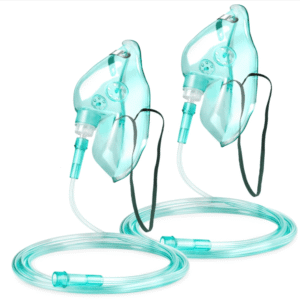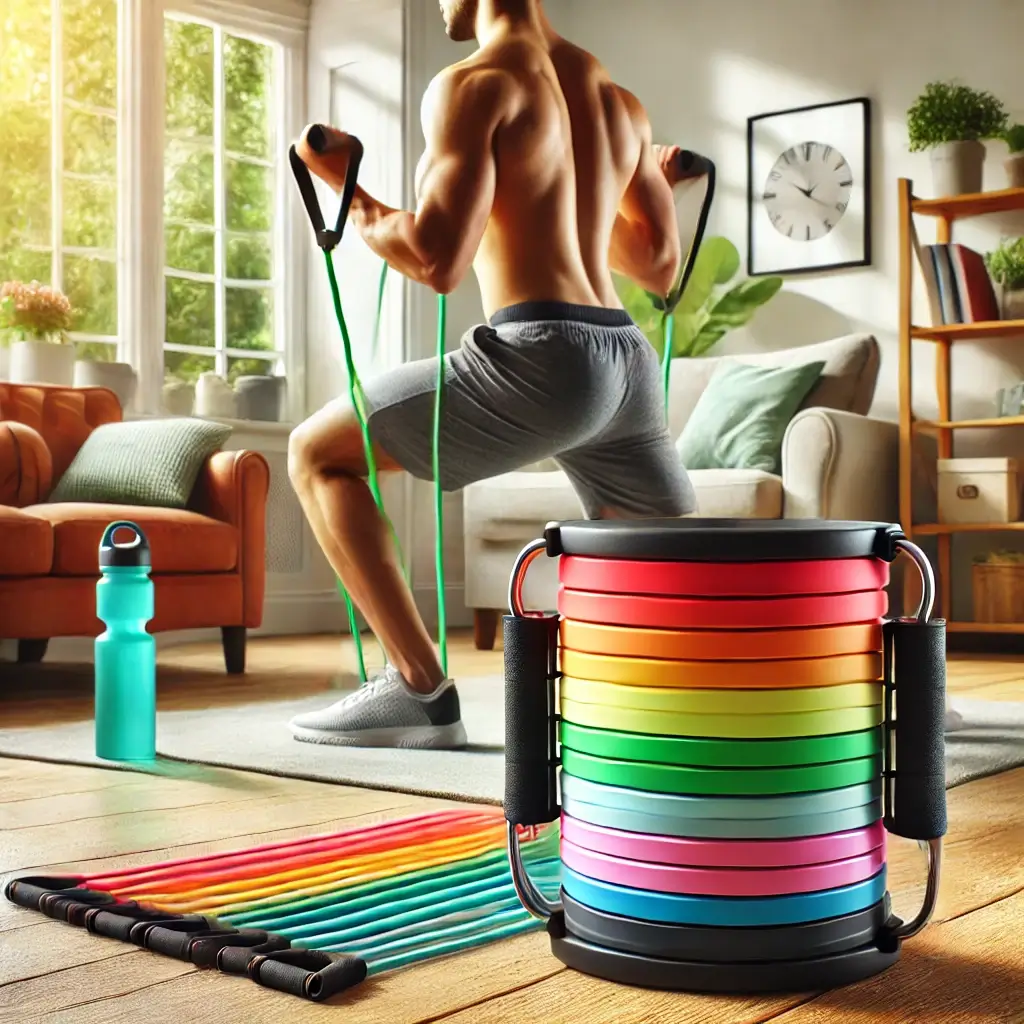5 Best Oxygen Masks: Types, Uses, and How to Choose the Best One
Breathing is life. But for millions of Americans with respiratory conditions, a simple breath can be a daily struggle. Supplemental oxygen is a medical necessity that restores quality of life, and the right oxygen mask is the critical link in that chain. This guide is here to demystify the world of oxygen masks, helping you understand the options and find the perfect fit for your health needs.

What Exactly Is an Oxygen Mask and How Does It Work?
An oxygen mask is a medical device designed to deliver breathing oxygen from a storage tank to a person’s lungs. It typically covers the nose and mouth and is connected via a tube to an oxygen source, such as a compressed oxygen cylinder or, more commonly today, a portable oxygen concentrator. The mask’s primary function is to provide a higher concentration of oxygen than what’s available in the ambient air (which is about 21%).
The process is straightforward: oxygen flows from the source, through the tube, and into the mask. When you inhale, you breathe in this oxygen-rich air. The mask ensures that this supplemental oxygen is delivered efficiently, helping to increase the oxygen levels in your blood and alleviate the symptoms of respiratory distress.
The Different Types of Oxygen Masks Explained
Not all oxygen masks are created equal. The type prescribed by a doctor depends on the required oxygen concentration, flow rate, and the patient’s specific medical condition. Here are the most common types you’ll encounter:
1. Simple Face Mask
This is a basic, clear plastic mask that covers the nose and mouth. It has small holes on the sides to allow exhaled carbon dioxide to escape. It’s used for patients who need a moderate amount of oxygen (typically delivering 35-55% oxygen concentration at flow rates of 6-10 liters per minute).
2. Nasal Cannula
While not a “mask” in the traditional sense, a nasal cannula is the most common device for delivering low-flow oxygen. It consists of two small prongs that sit just inside the nostrils. It’s more comfortable than a full mask, allowing users to talk and eat easily. It’s suitable for low oxygen needs (24-44% concentration at 1-6 liters per minute).
3. Non-Rebreather Mask
This mask is designed for emergencies and situations requiring high-concentration oxygen. It features a reservoir bag that fills with pure oxygen and a one-way valve system that prevents exhaled air from mixing with the incoming oxygen. This allows it to deliver very high oxygen concentrations, often between 80% and 95%.
4. Partial Rebreather Mask
Similar in appearance to a non-rebreather, the partial rebreather mask also has a reservoir bag but lacks a one-way valve between the bag and mask. This allows some exhaled air to re-enter the bag, slightly lowering the oxygen concentration compared to a non-rebreather, typically in the 60-75% range.
5. Venturi Mask (Air-Entrainment Mask)
This is a specialized mask that allows for highly precise oxygen concentration delivery. It uses color-coded adaptors, each corresponding to a specific oxygen percentage. Doctors use this when it’s critical to control the exact amount of oxygen a patient receives, which is common for patients with COPD (Chronic Obstructive Pulmonary Disease).
How to Choose the Right Oxygen Mask: A Buyer’s Guide
Selecting an oxygen mask isn’t just about picking one off the shelf. It’s a decision that directly impacts comfort, therapy effectiveness, and overall health. Here are the key factors to consider, always in consultation with your healthcare provider.
- Prescribed Flow Rate and FiO2: Your doctor will prescribe a specific flow rate (in liters per minute) and required oxygen concentration (FiO2). This is the most important factor and will determine which type of mask (nasal cannula, simple mask, non-rebreather, etc.) is appropriate for you.
- Fit and Comfort: A poorly fitting mask can cause skin irritation and leak oxygen, reducing the effectiveness of the therapy. Look for masks made from soft, pliable materials like silicone. Adjustable straps and a flexible nose clip are essential for a secure, comfortable seal.
- Patient’s Condition: A patient’s breathing pattern matters. For “mouth breathers,” a full mask is necessary, whereas a nasal cannula is sufficient for those who breathe through their nose. For those with claustrophobia, a cannula might be a better choice than a full mask.
- Portability and Lifestyle: Your daily activities influence your choice. If you are active, a lightweight nasal cannula paired with a portable oxygen concentrator is ideal. For home use, comfort might be a higher priority.
- Disposable vs. Reusable: Many masks and cannulas are designed for single-patient use but can be used for a period before being disposed of. Reusable masks are available but require diligent cleaning to prevent infections. Disposable options are often more convenient and hygienic for short-term needs.
Expert Tip: Proper care and recovery involve more than just respiratory support. Many individuals requiring oxygen therapy also manage conditions affecting their mobility. Tools like the best rehabilitation robot gloves for hand therapy or supportive shoulder braces can be crucial components of a holistic recovery plan, helping you regain strength and independence.
Our Top 5 Picks for Best Oxygen Masks in 2025
Based on user reviews, material quality, and design effectiveness, here are our top 5 recommended oxygen delivery devices available on Amazon.
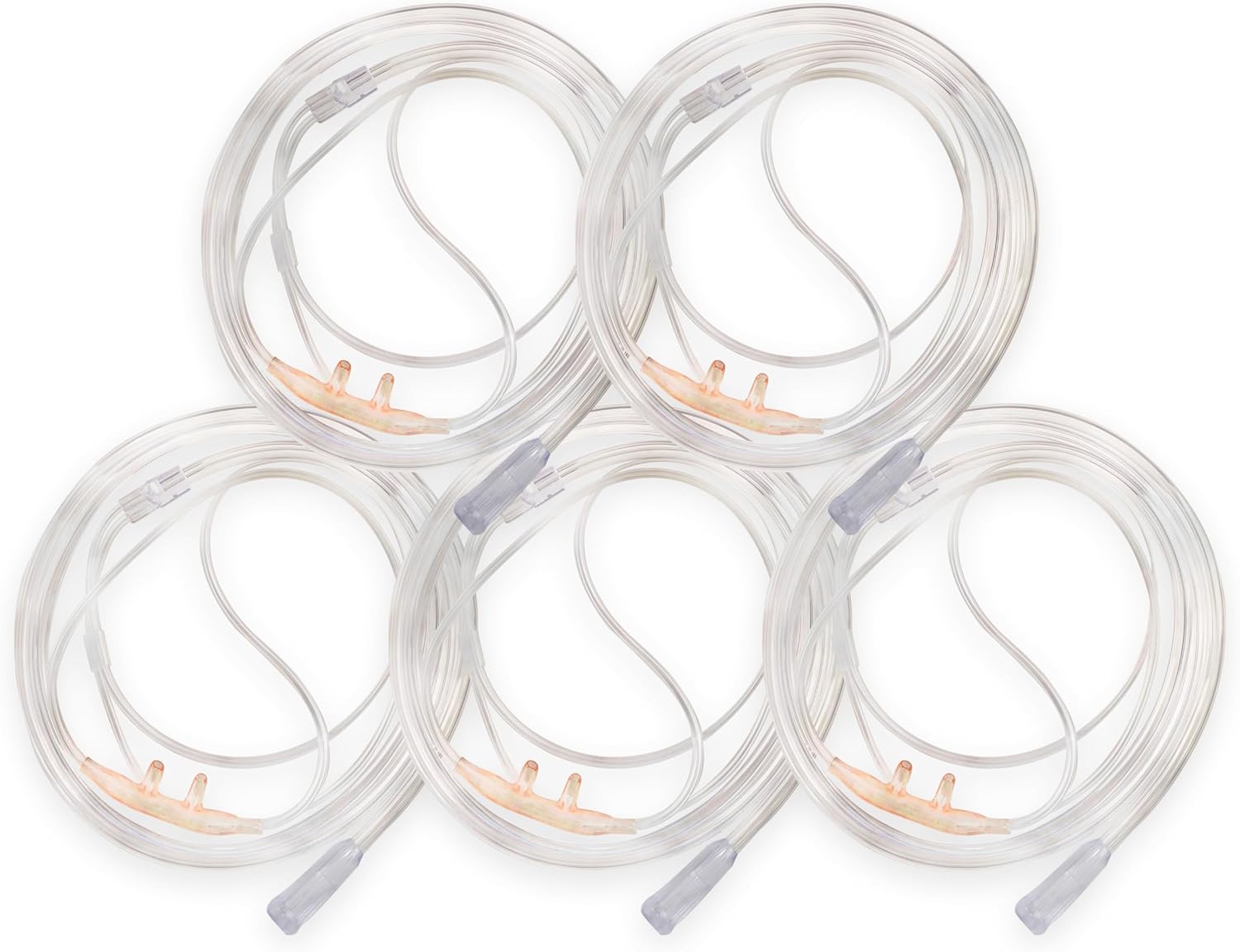
1. Salter Labs Adult Oxygen Cannula (5-Pack)
Best Overall CannulaFor low-flow oxygen users, comfort is king. Salter Labs is a trusted name in respiratory care, and their adult nasal cannula is a prime example of why. Made from a soft, lightweight material, it’s designed for long-term wear without causing irritation behind the ears or on the face.
- Material: Soft, clear vinyl material
- Flow Rate: Ideal for 1-6 LPM
- Tubing Length: 7 feet (2.1 meters)
- Special Feature: Three-channel safety tubing to prevent kinking
Pros
- Extremely soft and comfortable
- Kink-resistant tubing ensures consistent flow
- Excellent value in a multi-pack
- Trusted medical brand
Cons
- Not suitable for high-flow oxygen needs
- Vinyl can stiffen slightly over time

2. FOQITOXI Adult Elongated Oxygen Mask
Best Simple MaskWhen a simple, reliable face mask is needed for moderate oxygen flow, the Teleflex Hudson RCI is a top-tier choice. Its elongated design fits comfortably under the chin, providing a better seal for a wider range of face shapes. The adjustable nose clip and soft material minimize pressure points.
- Material: Clear, soft vinyl
- Flow Rate: Suitable for 5-10 LPM
- Tubing Length: 7 feet
- Special Feature: Elongated shape for an improved seal
Pros
- Excellent seal minimizes oxygen leakage
- Adjustable nose clip for a custom fit
- Smooth, feathered edges for enhanced comfort
- Swivel connector prevents tubing twists
Cons
- Can make talking and eating difficult
- Elastic strap may lose elasticity over weeks of use
For many individuals, respiratory therapy extends beyond just oxygen. Conditions like asthma or COPD often require medication delivered directly to the lungs. In these cases, the best portable nebulizers can be a life-changing addition to your health toolkit, offering convenient treatment wherever you are.
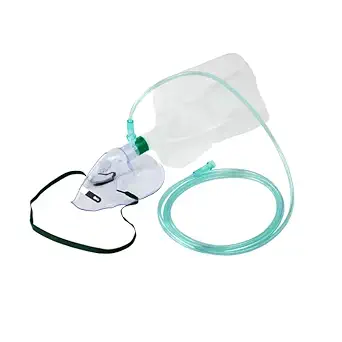
3. Dynarex High-Concentration Non-Rebreather Mask
Best for High-FlowIn situations requiring the highest possible oxygen concentration without intubation, a non-rebreather mask is essential. This model from Dynarex is designed for efficiency and patient safety, featuring a reservoir bag and one-way valves to prevent rebreathing of exhaled CO2, delivering up to 95% oxygen.
- Type: Non-Rebreather with Reservoir Bag
- Flow Rate: Designed for 10-15 LPM
- Tubing Length: 7 feet
- Special Feature: Safety vent and non-return valves
Pros
- Delivers very high oxygen concentrations
- Soft, pliable mask for a good seal
- Transparent design for easy patient monitoring
- Latex-free construction
Cons
- For short-term or emergency use primarily
- Reservoir bag can be cumbersome

4. PARI Pediatric Elongated Aerosol Mask
Best for ChildrenChildren require masks designed for their smaller facial structures. The Salter Labs pediatric mask provides a comfortable and secure fit for younger patients. This model is an aerosol mask, meaning it can be used for both oxygen delivery and nebulized breathing treatments, making it highly versatile for kids with conditions like asthma.
- Size: Pediatric
- Type: Aerosol/Oxygen Mask
- Material: Soft, clear vinyl
- Special Feature: Swivel connector for flexible positioning
Pros
- Specifically designed for a child’s face
- Comfortable and non-intimidating design
- Can be used for multiple types of respiratory therapy
- Latex-free to prevent allergic reactions
Cons
- Elastic strap requires careful adjustment for a snug fit
Managing chronic conditions often means finding comfort in everyday life. For those dealing with joint pain alongside respiratory issues, simple aids can make a huge difference. Investing in the best arthritis gloves can provide welcome relief and improve hand function, complementing your primary treatment plan.
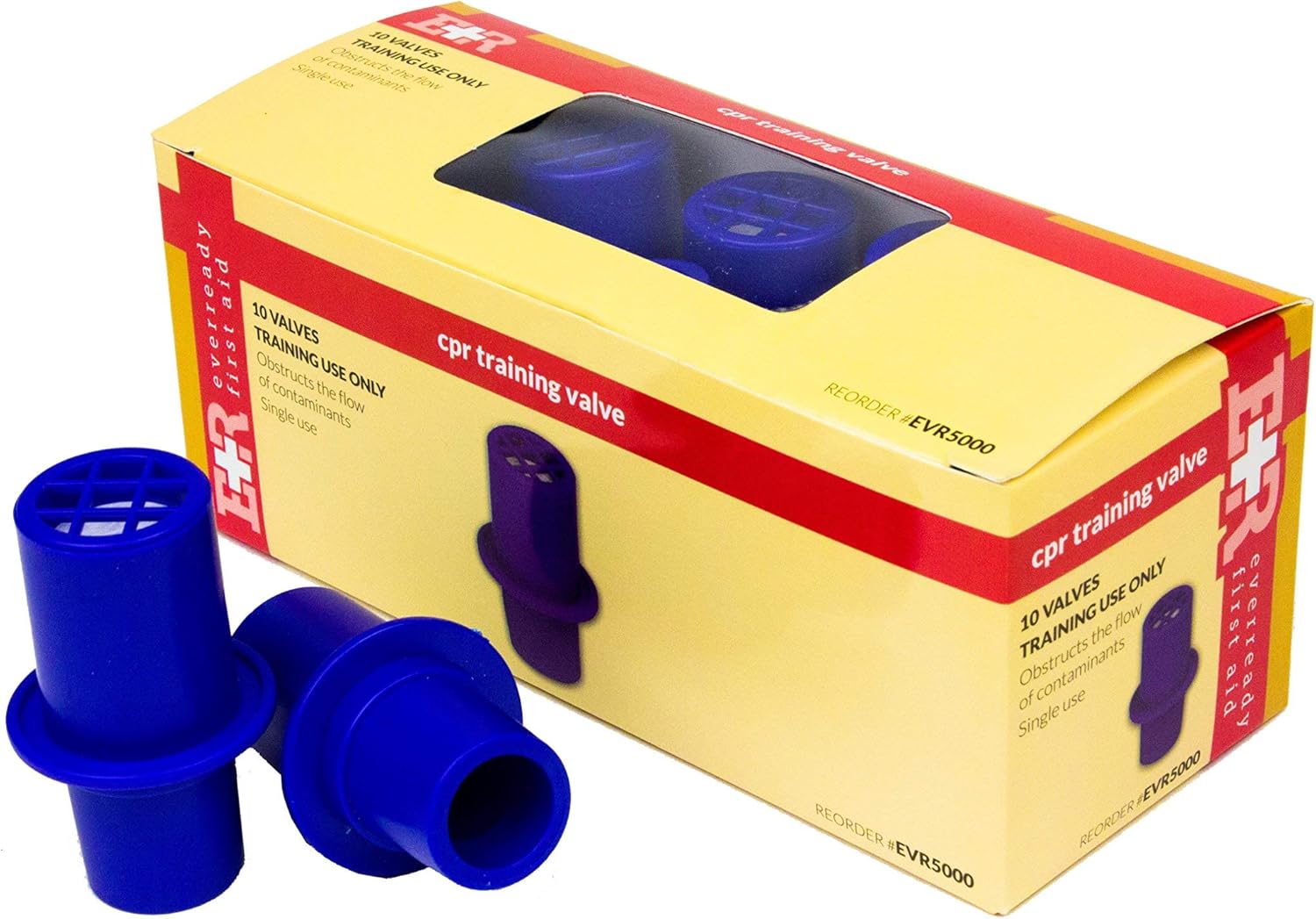
5. Ever-Ready Disposable Oxygen Masks (10-Pack)
Best Value PackFor short-term use, travel, or to have on hand for emergencies, a value pack of disposable masks is a practical choice. This 10-pack from Ever-Ready provides standard adult-sized masks that are individually sealed for hygiene. They are perfect for stocking a first-aid kit or for situations where frequent replacement is necessary.
- Quantity: 10 individually wrapped masks
- Type: Simple Face Mask
- Tubing Length: 7 feet
- Special Feature: Individually sealed for sterility
Pros
- Excellent value for money
- Hygienic, individually packaged
- Standard design fits most adults
- Perfect for first aid or backup supply
Cons
- Basic materials, not intended for long-term comfort
- Nose clip is less robust than premium models
Safety, Maintenance, and Maximizing Your Therapy
Using an oxygen mask correctly is vital for both safety and effectiveness. Here are some essential tips:
- Regular Cleaning: For reusable cannulas and masks, clean daily with warm, soapy water. Rinse thoroughly and let air dry completely before use. Never share your mask with others.
- Check for Damage: Before each use, inspect the mask and tubing for cracks, tears, or blockages. Damaged equipment can leak oxygen or fail to deliver the correct flow rate.
- No Smoking or Open Flames: This is the most critical rule. Oxygen is highly combustible. There should be absolutely no smoking, candles, or open flames within 10 feet of where oxygen is being used or stored.
- Stay Active (As Advised): Supplemental oxygen is meant to improve your ability to function. Under your doctor’s guidance, gentle physical activity is often encouraged. For those looking to maintain strength at home, understanding why a compact resistance band set is perfect for quick workouts can provide a safe and effective way to exercise.
Frequently Asked Questions (FAQ)
Can I buy an oxygen mask without a prescription?
While you can purchase the masks and tubing themselves online (as they are just the delivery device), you cannot purchase medical-grade oxygen without a valid prescription from a licensed healthcare provider in the United States. Using supplemental oxygen without a doctor’s guidance can be dangerous.
How often should I replace my oxygen mask or nasal cannula?
This depends on the manufacturer’s recommendations and your usage. As a general rule, disposable nasal cannulas are often replaced every 1-2 weeks, while masks might be replaced every 2-4 weeks. If the device becomes cracked, stiff, or cloudy, replace it immediately.
What’s the difference between continuous flow and pulse dose oxygen?
Continuous flow, typically delivered via masks, provides a constant stream of oxygen regardless of your breathing pattern. Pulse dose, common with nasal cannulas and portable concentrators, delivers a “puff” of oxygen only when you inhale. Pulse dose conserves oxygen but is not suitable for everyone, especially during sleep.
My skin gets irritated from the mask. What can I do?
First, ensure the mask fits correctly and isn’t too tight. You can use water-based moisturizers (never petroleum-based) on your face, but allow them to fully absorb before putting on the mask. Specialized soft strap covers or gel pads are also available to reduce pressure points.
Conclusion: Breathing Easier with the Right Choice
Choosing the right oxygen mask is a fundamental part of effective respiratory therapy. It’s a decision that balances medical necessity with personal comfort and lifestyle. From the simple convenience of a Salter Labs Nasal Cannula for low-flow users to the high-concentration delivery of a Dynarex Non-Rebreather Mask in acute situations, there is a device tailored to every need.
Always prioritize your doctor’s recommendation, and then use the factors of fit, material, and lifestyle to select the best product for you. By making an informed choice, you ensure that every breath you take is supported, comfortable, and life-enhancing.
